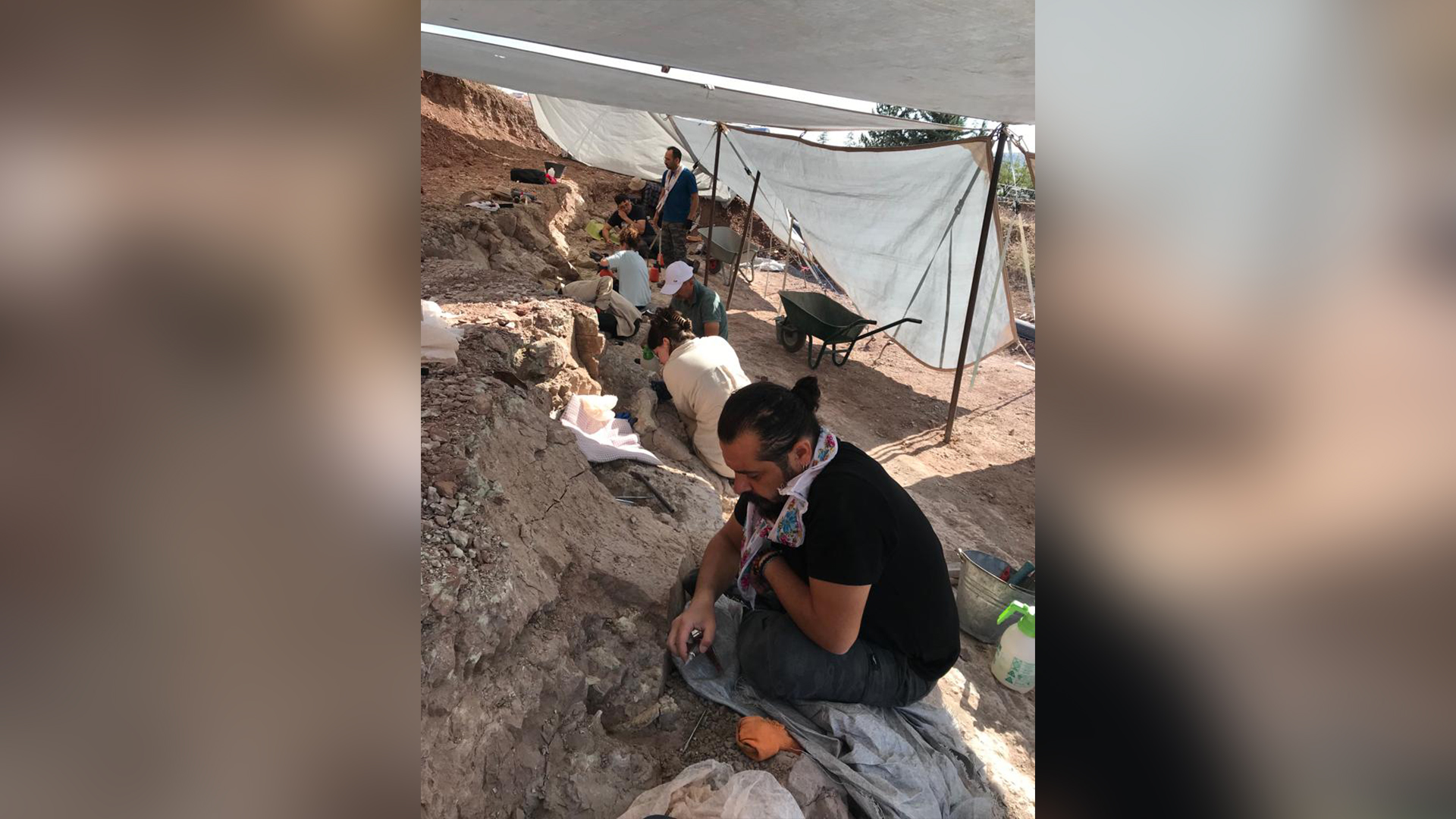
An ape fossil found in Turkey may controversially suggest that the ancestors of African apes and humans first evolved in Europe before migrating to Africa, a research team says in a new study.
The proposal breaks with the conventional view that hominines — the group that includes humans, the African apes (chimps, bonobos and gorillas) and their fossil ancestors — originated exclusively in Africa.
However, the discovery of several hominine fossils in Europe and Anatolia (modern-day Turkey) has already led some researchers to argue that hominines first evolved in Europe. This view suggests that hominines later dispersed into Africa between 7 million and 9 million years ago.
Study co-senior author David Begun, a paleoanthropologist at the University of Toronto, clarified that they are talking about the common ancestor of hominines, and not about the human lineage after it diverged from the ancestors of chimpanzees and bonobos, our closest living relatives.
"Since that divergence, most of human evolutionary history has occurred in Africa," Begun told Live Science. "It is also most likely that the chimpanzee and human lineages diverged from each other in Africa."
In the new study, the researchers analyzed a newly identified ape fossil from the 8.7 million-year-old site of Çorakyerler in central Anatolia. They dubbed the species Anadoluvius turkae. "Anadolu" is the modern Turkish word for Anatolia, and "turk" refers to Turkey.
The fossil suggests that A. turkae likely weighed about 110 to 130 pounds (50 to 60 kilograms), or about the weight of a large male chimpanzee.
Related: What did the last common ancestor between humans and apes look like?
Based on the fossils of other animals found alongside it — such as giraffes, warthogs, rhinos, antelope, zebras, elephants, porcupines and hyenas — as well as other geological evidence, the researchers suggest that the newfound ape lived in a dry forest, more like where the early humans in Africa may have dwelled, rather than in the forest settings of modern great apes. A. turkae's powerful jaws and large, thickly enameled teeth suggest that it may have dined on hard or tough foods such as roots, so A. turkae likely spent a great deal of time on the ground.
In the new study, the scientists focused on a well-preserved partial skull uncovered at the site in 2015. This fossil includes most of the facial structure and the front part of the braincase, the area where the brain sat — features that helped the team calculate evolutionary relationships.
"I was able to reconstruct and see for the first time the face of an ancestor of ours no one had ever seen before," Begun said.
The researchers suggest that A. turkae and other fossil apes from nearby areas, such as Ouranopithecus in Greece and Turkey and Graecopithecus in Bulgaria, formed a group of early hominines. This may, in turn, suggest that the earliest hominines arose in Europe and the eastern Mediterranean. Specifically, the team contends that ancient Balkan and Anatolian apes evolved from ancestors in Western and Central Europe.
Evolutionary questions

One question these findings raise is why, if hominines arose in Europe, they are no longer there, except for recently arrived humans, and why ancient hominines did not also disperse into Asia, Begun said.
"Evolution is not very predictable," Begun said. "It happens as a series of unrelated and random events interact. We can assume that the conditions were not right for apes to move into Asia from the eastern Mediterranean in the late Miocene, but they were right for a dispersal into Africa."
As for why "we do not find African apes in Europe today, species go extinct all the time," Begun said.
Begun also cautioned that he did not want this research misinterpreted or misused to suggest that Eurasia was somehow of primary importance in human evolution. Instead, "we need to know where the common ancestor of African apes and humans evolved so that we can begin to understand the circumstances of this evolution," he said. "Between 14 million and 7 million years ago, the areas in which apes were found in Europe, Asia and Africa were different ecologically, just as many regions in these continents differ today. Knowing the ecological conditions in which our ancestors evolved is critical to understanding our origins."
A different take

This new discovery "expands our understanding of a group that appears closely related to living African apes and humans," Christopher Gilbert, a paleoanthropologist at Hunter College of City University of New York who did not participate in this study, told Live Science.
However, Gilbert noted that recent comprehensive analyses of fossil great apes and early hominins — the group that includes humans and the extinct species more closely related to humans than any other animal — do not support the argument that hominines originated in Europe.
"Many other experts investigating the evolutionary relationships of fossil and living great apes using more modern methods and including more [groups] find that many of the European apes branched off before orangutans, making them likely distant relatives of living African great apes and humans," Gilbert said.
"Furthermore, these more comprehensive analyses suggest that apes like Anadoluvius are just as likely or more likely to be recent immigrants to the Mediterranean from Africa rather than migrating back into Africa," Gilbert added.
Fossil hominines like A. turkae aren't found in Africa largely because "we have a poor African fossil record in general during this time," Gilbert said. "I am reminded of the old paleontological axiom — 'absence of evidence is not evidence of absence.'"
However, Begun argued that an absence of hominine fossils in Africa was telling and supported the idea that hominines originated elsewhere.
In any case, both Begun and Gilbert noted that future fieldwork in Africa and Eurasia looking for fossil apes would potentially help clarify this matter.
The scientists detailed their findings Aug. 23 in the journal Communications Biology.







